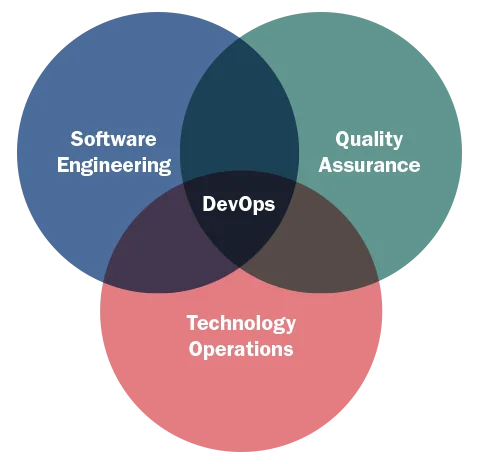DevOps and Agile
PUBLISHED IN
Continuous Deployment of CapabilityMelvin Conway, an eminent computer scientist and programmer, created Conway's Law, which states: Organizations that design systems are constrained to produce designs which are copies of the communication structures of these organizations. Thus, a company with frontend, backend, and database teams might lean heavily towards three-tier architectures. The structure of the application developed will be determined, in large part, by the communication structure of the organization developing it. In short, form is a product of communication.
Now, let's look at the fundamental concept of Conway's Law applied to the organization itself. The traditional-but-insufficient waterfall development process has defined a specific communication structure for our application: Developers hand off to the quality assurance (QA) team for testing, QA hands off to the operations (Ops) team for deployment. The communication defined by this non-Agile process reinforces our flawed organizational structures, uncovering another example of Conway's Law: Organizational structure is a product of process.

As the figure shown above illustrates, siloed organizational structures align with sequential processes, e.g., waterfall methodologies. The DevOps method of breaking down these silos to encourage free communication and constant collaboration is actually reinforcing Agile thinking. Seen in this light, DevOps is a natural evolution of Agile thinking, bringing operations and sustainment activities and staff into the Agile fold.

Every Thursday, the SEI Blog will publish a new blog post that will offer guidelines and practical advice to organizations seeking to adopt DevOps in practice. We welcome your feedback on this series, as well as suggestions for future content. Please leave feedback in the comments section below.
More By The Author
More In Continuous Deployment of Capability
PUBLISHED IN
Continuous Deployment of CapabilityGet updates on our latest work.
Sign up to have the latest post sent to your inbox weekly.
Subscribe Get our RSS feedMore In Continuous Deployment of Capability
Get updates on our latest work.
Each week, our researchers write about the latest in software engineering, cybersecurity and artificial intelligence. Sign up to get the latest post sent to your inbox the day it's published.
Subscribe Get our RSS feed
